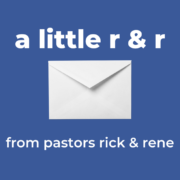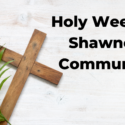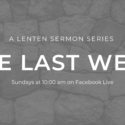a little r & r

Mexicans have a saying for this time of year: “Febrero loco, Marzo un poco.” You don’t have to know Spanish to guess what it means: “February is crazy, but March is even crazier.”
Just a momentary thought makes us quickly realize this time of year is loco in nearly every way we can imagine. First, there’s the crazy weather. A mere three weeks ago we were breaking records for the most consecutive days of snowfall; albeit not any single deep snow, but snow, nonetheless. Temperatures and wind chills from a southerly moving polar vortex were plunging well below zero. This week we’re experiencing temperatures more than 80-degrees F. warmer. People are in short sleeves.
If anyone is feeling a bit dizzy, it may not be from post-COVID inoculation but from barometric pressures swinging wildly from one extreme to another! Wind speeds changing all the time make us unsure whether March came in like a lamb or a lion!
Besides which, is March a winter month or a spring month? Normally March 21 is the first day of Spring (Hurray!), but the transition from one season to another can feel like the final stage of childbirth. Winter’s baby has “crowned” but spring hasn’t quite gotten born yet. So, moving from winter to spring can feel very painful.
In a way, this past year has seemed like an endless winter. The onslaught and scary impact of the pandemic began almost exactly a year ago here in the United States. Our patience is wearing thin. Even our questions disclose our impatience. When will everyone get the vaccine? When will things be back to normal? When can we fully meet as a church on Sundays? Questions with no answers just keep coming.
By now, you may have figured out that this is my least favorite time of year, though I love seeing the first tulips, daffodils, forsythia, and buds on trees! Glorious!! And yet, I have come to really dislike the “spring forward” to Daylight Savings Time, which by the way happens this coming Sunday, the 14th. Let’s either do permanent Daylight Savings or keep to Standard time!
Finally, Lent and Easter support our Mexican friends’ sentiment of how crazy February is and even crazier March is! Doing Lent right means doing the hard self-examination required to embrace the joy of Easter. Without Lent’s demand for us to look into our own inner darkness, our celebration of Jesus’ resurrection becomes muted.
And even figuring out when Easter occurs is a kind of calendar calculus. It’s loony too, because Easter’s date each year is set, unlike Christmas, according to the lunar calendar, when the full moon arrives. It’s tied to the Jewish Passover on their 13-month lunar calendar in which every month is 28 days long.
The key to figuring out Easter’s date each year is the word “FIRST.” Easter is the FIRST Sunday after the FIRST full moon after the FIRST day of spring. This year Easter is the first Sunday in April, the 4th. But Easter can fall anywhere between March 22 and April 21. The date of the crazy full moon is one of the three keystones for figuring out when Easter arrives.
I think we owe Mexicans a word of gracias for giving us such a colorful and accurate way of describing this time of year with all the insanity that marks winter becoming spring. Because, really, who can easily, logically, rationally, and accurately describe the miracles of cocoons becoming butterflies, of bare branches budding and blooming, of the cross and death as not the end but the beginning of new life and resurrection?
John’s Jesus captures this craziness beautifully when he says, in Chapter 16 in the Farewell section of John’s gospel:
When a woman gives birth, she has pain because her time has come. But when the child is born, she no longer remembers her distress because of her joy that a child has been born into the world. In the same way, you have sorrow now; but I will see you again, and you will be overjoyed. No one takes away your joy. Up to now, you have asked nothing in my name. Ask and you will receive so that your joy will be complete.
Friends, winter is ending. Spring is coming. Hope is about to be fulfilled. For, as Psalm 30 sings, “weeping may linger for the night, but joy comes with the morning.”
Let’s March On as morning dawns!
Rick



